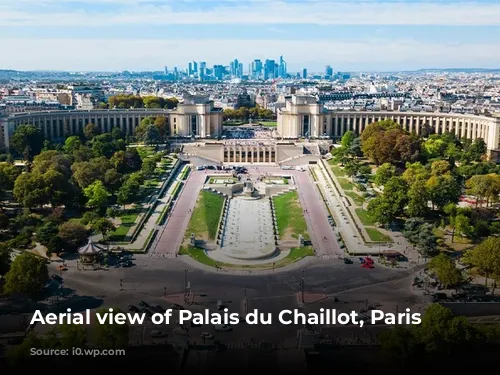Paris, a city of captivating contrasts, boasts a harmonious blend of ancient and modern marvels. While the City of Lights is known for its iconic landmarks and charming cafes, there’s a hidden gem waiting to be rediscovered – the Palais du Trocadéro. This magnificent structure, a testament to the city’s grand past, was a defining feature of the Paris World Fairs, also known as the Expositions Universelles. From 1855 to 1937, Paris hosted seven of these international extravaganzas, attracting visitors from every corner of the globe. The 1900 Fair truly stole the show, welcoming over 50 million visitors and showcasing the work of 83,000 exhibitors.
The Palais du Trocadéro, a true embodiment of architectural ambition, was designed by Gabriel Davioud for the 1878 Exposition Universelle. Davioud, a renowned architect and colleague of the legendary urban planner Georges-Eugène “Baron” Haussmann, left an indelible mark on Paris’s cityscape. He was the mastermind behind the Parisian street furniture that we see today, including benches, lampposts, signposts, fences, balustrades, kiosks, pavilions, bandstands, monuments, and fountains.
Standing majestically on the Chaillot Hill, overlooking the Seine River and the iconic Eiffel Tower, the Palais du Trocadéro was named in honor of the 1823 Battle of Trocadéro. This pivotal battle witnessed French forces, led by the Duc d’Angoulême, capture the fortified Isla del Trocadero in Spain. Davioud’s architectural vision for the palace was an exquisite blend of Byzantine and Moorish styles, creating a grand setting for international gatherings during the World Fairs.
At its heart was a spacious concert hall, flanked by two majestic 76-meter towers. The hall housed a magnificent organ, crafted by the renowned Aristide Cavaillé-Coll, marking the first large organ to grace a concert hall in France. This magnificent instrument is still in use today, captivating audiences at the Auditorium Maurice Ravel in Lyon.

A Transformation Through Time: From Palais du Trocadéro to Palais de Chaillot
Despite its grandeur, the Palais du Trocadéro’s popularity waned, and its high construction cost delayed its replacement for nearly half a century. Finally, in 1937, the central building was demolished, making way for a new architectural marvel – the Palais de Chaillot. This new structure, built for the International Exhibition of Arts and Techniques, incorporated the wings of the Palais du Trocadéro, seamlessly merging the past with the present. Today, the Palais de Chaillot is home to four esteemed cultural institutions: the City of Architecture and Heritage, the National Maritime Museum, the Musée de l’Homme, and the Chaillot – National Dance Theater.
Even though it’s often overlooked by tourists, a visit to the Palais de Chaillot is an absolute must. From the Esplanade des Libertés et des Droits de l’Homme, situated between the two wings, you can enjoy breathtaking panoramic views of the Eiffel Tower and the Champs du de Mars. If you’re looking for a bite to eat, head to the Café de l’Homme, nestled at the back of the Musée de l’Homme. This popular spot is a Parisian favorite, especially during the summer months, offering a stunning terrace overlooking the iconic tower.

The Legacy of the Palais du Trocadéro
The expansive space between the Palais de Chaillot and the Seine River is adorned with lush gardens and mesmerizing fountains, meticulously designed by Jean-Charles Alphand. Once upon a time, two magnificent animal statues – a rhinoceros and an elephant – stood proudly in these gardens. Removed during the demolition of the old palace, these statues found a new home next to the entrance of the Musée d’Orsay in 1986.
The garden also played host to a remarkable piece of history – the head of the Statue of Liberty. Before it was packed into one of 214 wooden crates for its journey to the United States, the head stood majestically in the garden. This iconic statue, designed by French sculptor Frederic Auguste Bartholdi and built by Gustave Eiffel, was a gift from the people of France to the United States. It was unveiled in 1886, a testament to the enduring friendship between the two nations. Today, more than 100 replicas of the Statue of Liberty stand tall around the world, including over 30 in France, a reminder of its enduring legacy.












